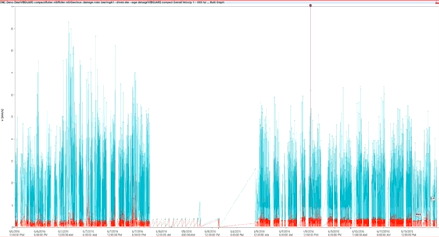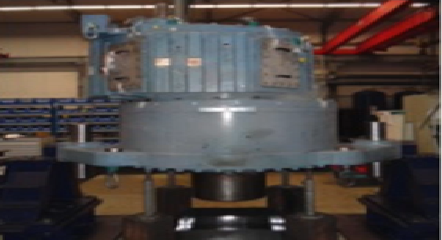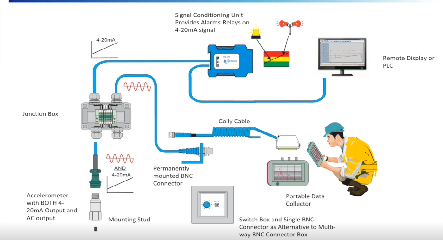Signal processing technique acceleration enveloping is widely used in the cement industry where bearings are vulnerable to premature failure due to aggressive working environments. The reason why is obvious: it overcomes the limitations of conventional machine conditioning monitoring techniques, such as velocity spectrum measurements, to detect bearing failures at the earliest possible stage.
It does so by distinguishing between the vibration signatures of a failing bearing against a background of low-level, repetitive machine vibrations. This allows the rate of wear of the component to be monitored and maintenance work planned accordingly.

The unfiltered waveform from a failing bearing is a mixture of low and high frequencies, and has no obvious pattern. Acceleration enveloping overcomes this by first applying a band pass filter, which is carefully selected to isolate only those frequencies containing the signal of interest.
The filtered output, which identifies repeating, high frequency signals, is then rectified and demodulated to produce an ‘envelope’ of regularly spaced signals that are likely to occur when rolling elements pass over a raceway defect, for example. Other causes of noise, such as shaft rub, are random and will not produce these evenly spaced peaks.
Acceleration enveloping does, however, have its limitations. As the technique detects bearing faults manifested by repetitive, metal-to-metal impacts, anything that masks this – such as gaskets or dampers – will put a machine outside its scope of use. Moreover, interpreting the results may require a certain level of skill and experience gained from an extended period of monitoring.
If an application is suitable for acceleration enveloping and skilled personnel are available to interpret the signals, it is important to select vibration sensors that have an appropriate frequency response. These must be securely mounted close to the monitored component and positioned to measure horizontal, vertical or axial movements, as necessary.
In a typical crusher motor, for example, accelerometers are mounted radially on the drive end and non-drive end to monitor the motor bearing condition. Meanwhile, within a gearbox, an axial accelerometer on the input shaft can give a good indication of the thrust acting upon it.
The extreme conditions of cement production are challenging for bearings. Acceleration enveloping, as part of a wide-ranging condition-based maintenance regime, will spot problems early on and ensure that assets last for longer before failure, maximizing machine uptime, and improving plant efficiency.







